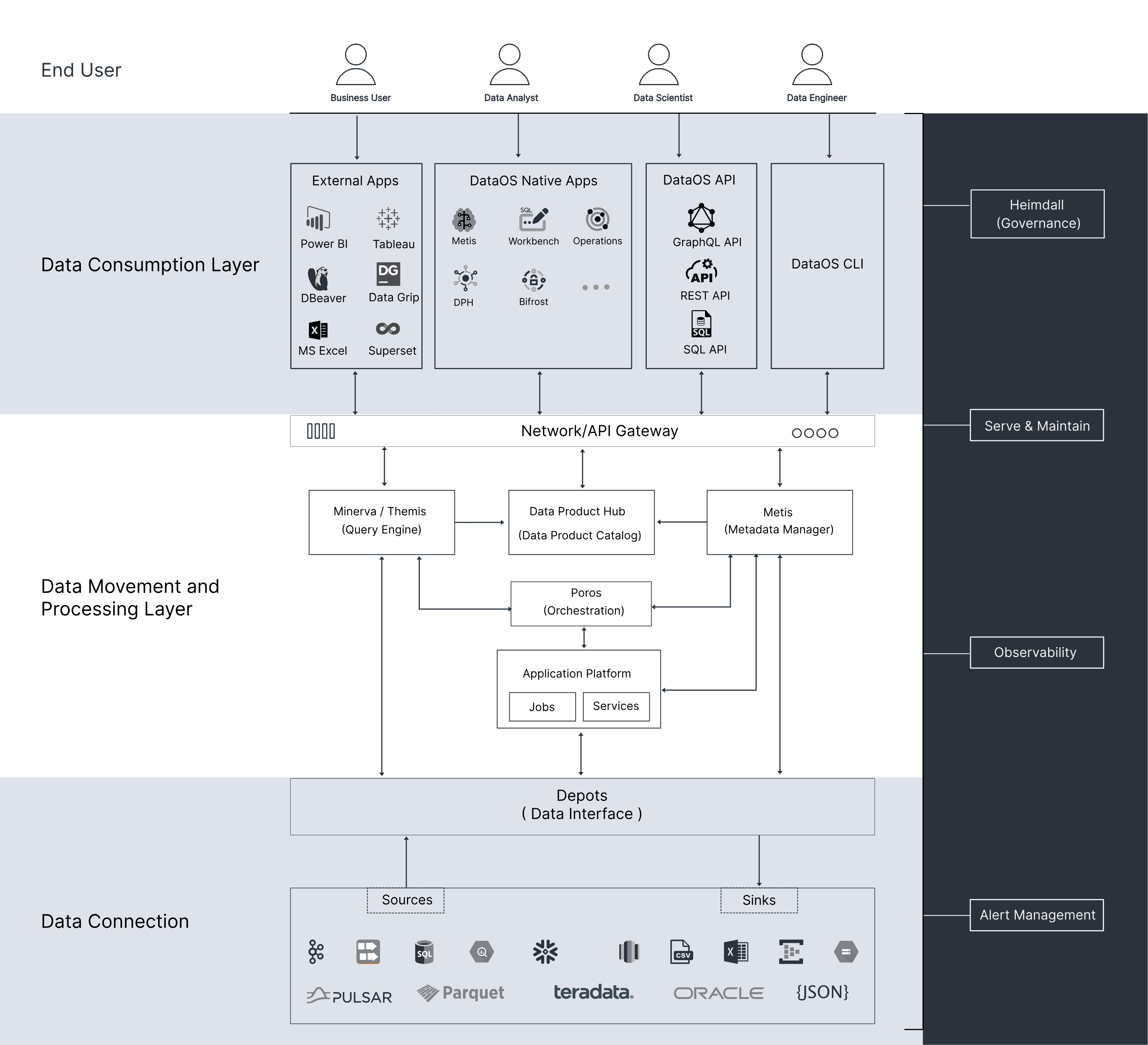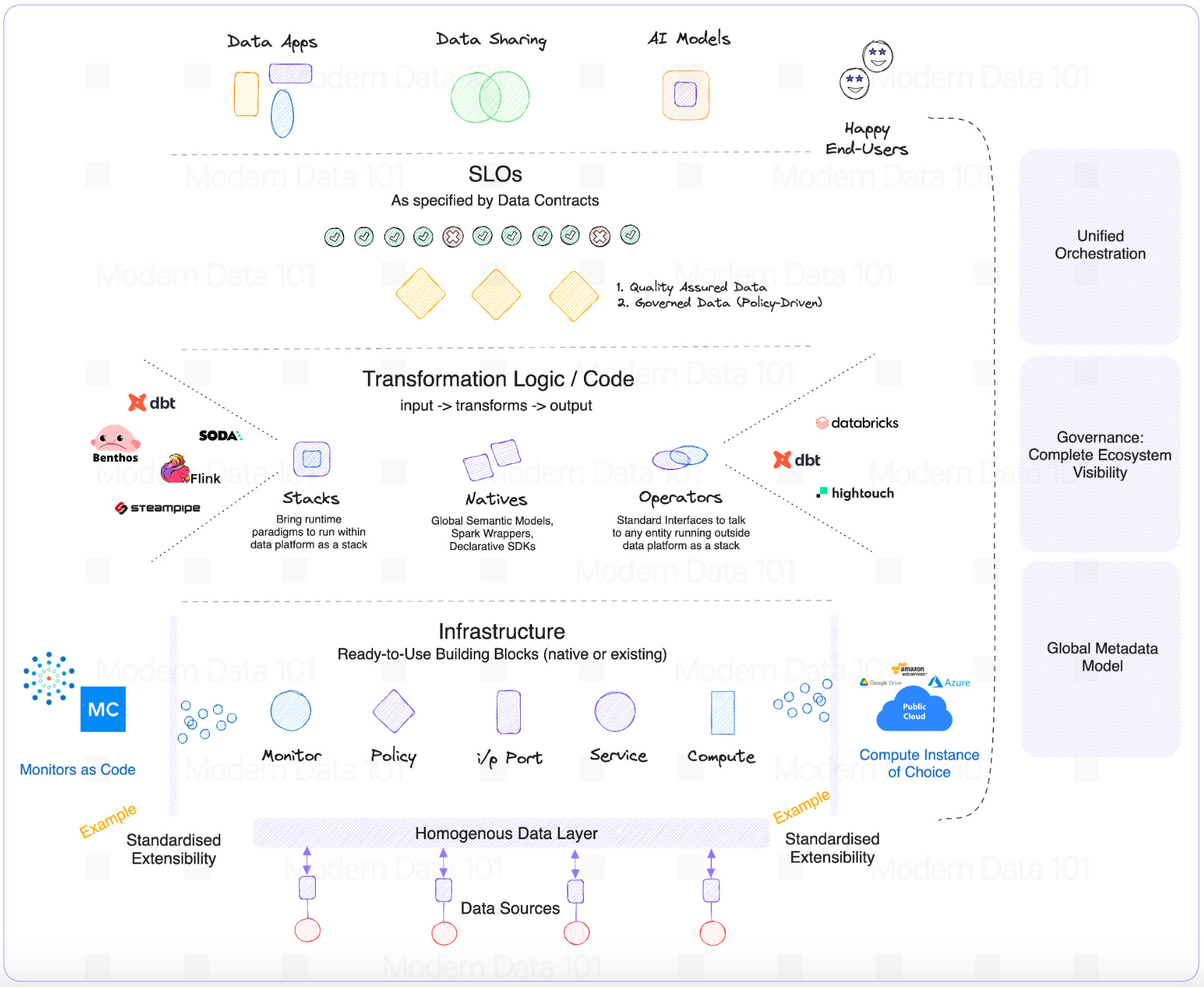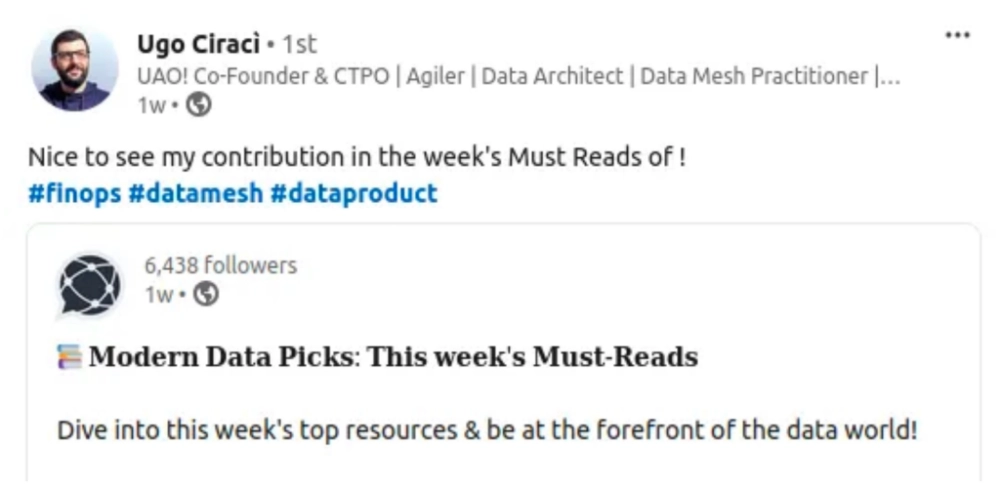
TL;DR
Introduction: Usage is the New Delivery
Enterprises have become increasingly data-driven these days, and data delivery is no longer a parameter for success. 3 in 5 organisations are using data analytics to drive business innovation, but data usage has taken its place, reflecting a new paradigm where data adoption and value have taken centre stage. It has solved challenges where traditional approaches miss the mark, more often than not: the lack of visibility for effective data usage analytics, outcome measurement, and user engagement.
This is where data products are changing the dynamic, and are governed, modular, purposeful digital assets embedded with product thinking right at their core. Data products are designed with user requirements in mind right from the first day. With mechanisms for defining ownership, feedback, and embedded telemetry, adoption becomes measurable and iteration becomes actionable.
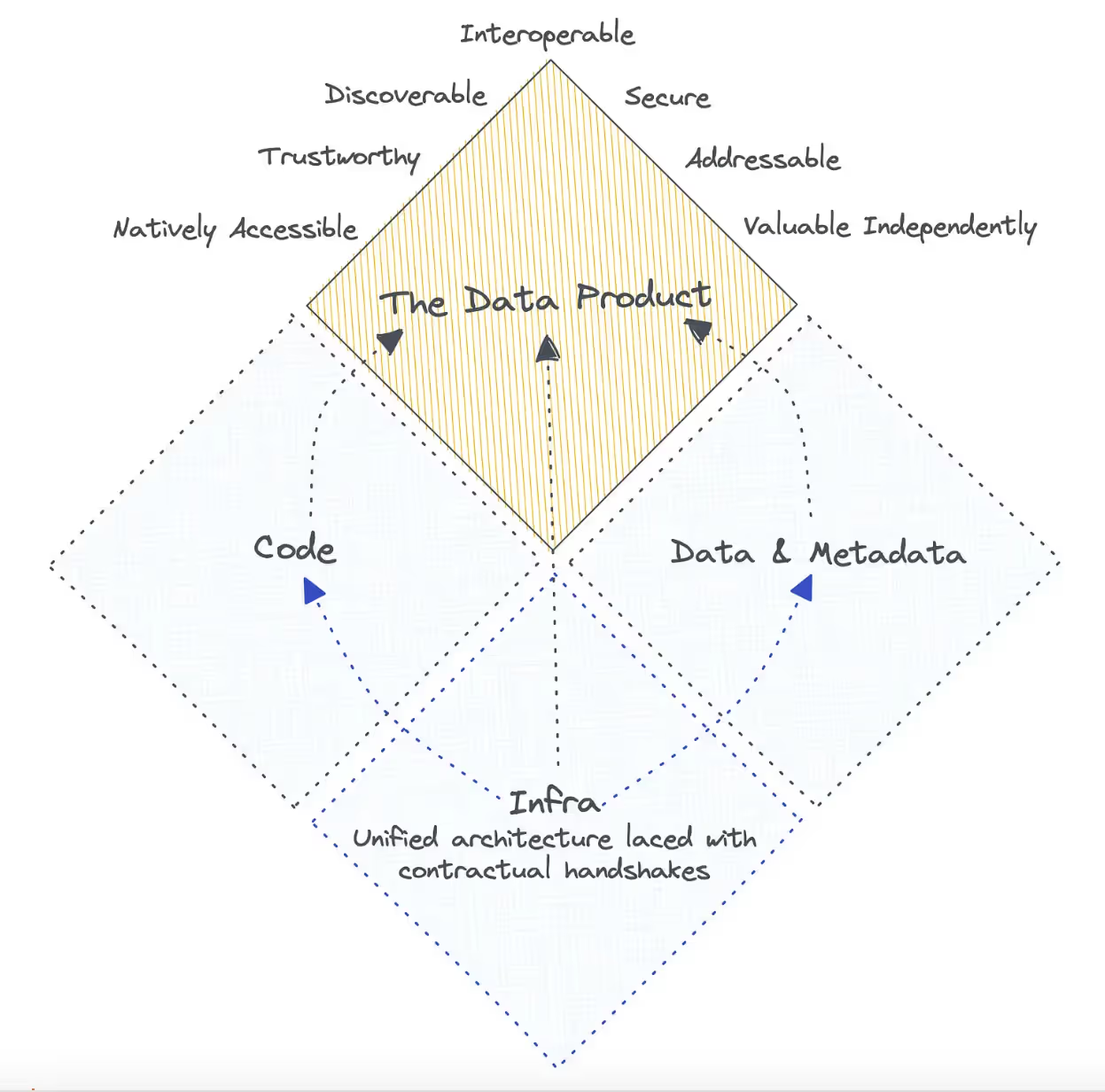
It reflects a mindset shift, where data usage is no longer an afterthought but a foundational element. For enterprises, data products enable organisations to bridge the gap between data delivery and data value, making sure that efforts are converted into tangible impact.
Why Traditional Usage Analytics Fall Short?
In most enterprises, traditional usage analytics revolve around BI pipelines that put a lot of focus on output metrics, such as dashboard loads, report views, and the count of downloads. However, these numbers seldom deliver the actual situation of business value and data adoption.
Lack of Business Context
It points to a massive gap between teams, mainly because of the lack of a structured metadata framework, raising the challenge to track data usage, its frequency, its purpose, and whether it succeeded in delivering the intended impact.
A Cost and Vendor Ecosystem Problem
Issues of vendor lock-ins also majorly affect enterprises. These traditional user analytics solutions often come bundled as rigid, full-stack packages, whether you need all the parts or not. Say you only need semantic modelling or activation, but the vendor insists on selling you their full suite, including storage, collection, and visualisation. It’s like being forced to buy a premium buffet when all you want is coffee and toast.
The real cost isn’t just the extra tools; you also get locked into their ecosystem. Their models can’t be read by external tools, and their activation pathways are limited to their own apps. This makes your existing investments incompatible, forcing you to either duplicate spend or rip-and-replace what you already have.
Faltering Processes
For data usage analytics, this was never good news, as it was always an afterthought, never a key system capability from day one. The consequences of this approach haven’t been favourable: unused assets, low stakeholder trust, and misaligned data platforms have become normal, and because there is no visibility into actual usage, teams end up optimising for delivery, and not for outcomes.
For scaling in the right direction, the analytics strategy needs to move to ensuring data value realisation from just being a measuring activity.
The Product Mindset: Building for Usage from Day One
In legacy data projects, starting with technical specifications and ending with delivery has been the standard template. A data product approach offers a radical flip: it begins with user requirements and ends with a consolidated outcome to facilitate insights that are reliable and can be fetched and used whenever required.
With accelerated time-to-value being one of the highlights of a product mindset, one of our previous posts discusses this in detail, which you can have a look at here!

The diagram illustrates the success to accelerated value with a step-by-step process involved in taking alignment on business North Stars to the generation of reusable & flexible insights.
In the case of a data product approach, usage analytics are a focal point, and not just an afterthought. Custom behaviours, also known as telemetry hooks, are embedded right from the start, allowing teams to measure engagement consistently from the beginning.
This shift towards product thinking also leads to clear ownership and accountability. Data producers and their performances are no longer measured only by successful deliveries but also by parameters such as user satisfaction and continued usability.
There is good news for feedback loops as well, as they become channels for making improvements, and not just a set of passive metrics for reporting.
When enterprises begin designing with usage in mind, organisations can improve their data adoption rates, create a data-driven culture, and ultimately, improve the overall data value.
How Data Products Transform Usage Analytics
Defining Data Products in Enterprise Context
Do you think modern enterprise data analytics is just about dashboards? It is actually about creating reusable, governed data products that everyone can trust and act on.
That is exactly what data products bring.
In the enterprise world, data products are packaged, reusable, governed units of data designed to serve a specific, well-defined business purpose. Think of them as the “APIs for trusted, ready-to-use data” that any team, data, AI, or business can plug into without worrying about data wrangling, quality fixes, or hidden inconsistencies.
A true data product is owned, maintained, and versioned like a software product. It comes with built-in metadata, lineage, quality checks, and access policies so that users know exactly what they’re consuming, how it’s calculated, and whether it’s fit for purpose. Instead of every team rebuilding the same metrics or pipelines from scratch, data products offer a single, authoritative source for things like “customer lifetime value,” “campaign ROI,” or “product usage frequency.”
There is a fundamental difference between data products and traditional BI pipelines: data products are built for usage observability, while BI pipelines are built, or can even be retrofitted for reporting as per requirements, but the scope in itself stays pretty confined.
By treating data as a product, enterprises close the gap between data creation and value extraction, reducing friction, enabling faster decision-making, and laying the groundwork for scalable AI and analytics initiatives.
Data Product Design Elements that Enable Usage Analytics
Semantic Consistency Across Metrics
Every domain defines metrics differently, creating chaos. Data products lock in a single, agreed definition, whether it’s “Active User,” “Retention Rate,” or “Campaign ROI, ”and apply it everywhere, from dashboards to AI models. One truth. Zero conflicts.
Self-Serve Access for Business and Product Teams
No more waiting in the data engineering queue. With self-serve access to curated, production-grade data products, business and product teams can explore, analyse, and experiment independently, without compromising governance or quality.
Real-Time Insights from Governed Pipelines
Data products deliver fresh, governed data directly into analytics dashboards, operational workflows, and AI pipelines. This means usage metrics don’t just inform strategy; they actively power decisions, automation, and model performance in real time.
Clearly-defined Ownership and Accountability
These are the core principles of a well-designed data product. When the purview of teams extends beyond delivery and into other activities, such as measuring adoption and impact, usage patterns can be monitored more effectively.
Cross-domain Discoverability and Collaboration
Most enterprises let marketing, product, and engineering work in silos, each with its own metrics and data pipelines. Data products break these walls by making curated, trusted data discoverable and reusable across domains.
With shared definitions, lineage, and quality controls, teams speak the same language, pull from the same source of truth, and skip rebuilding the same pipelines. The result: faster decisions, better AI model performance, and frictionless collaboration across the business.
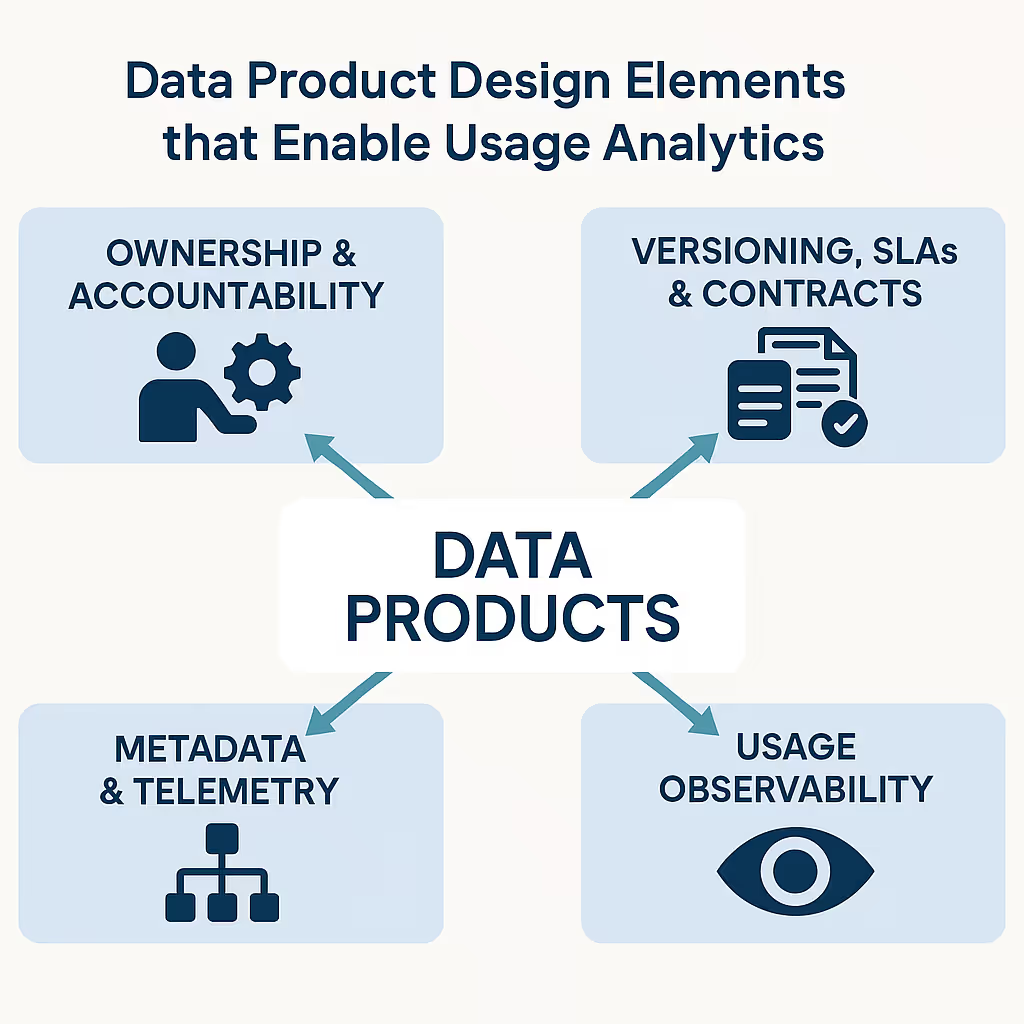
With the inclusion of these design elements, usage analytics can become central to the data strategy for enterprises, making faster feedback, better governance, and impressive ROI from data assets an everyday reality.
How Data Product Approach Enables Feedback Loops and Iteration?
It is about treating data like a living product.
When data is approached with a product-led approach, the job isn’t just over at delivery; it actually starts there. Data products are designed to continuously evolve with changing dynamics and requirements, which are recorded in the feedback mechanisms built into the system.
These feedback loops move beyond surveys as well as stakeholder reviews, where each logged query, missed SLA, and ignored dashboard takes the form of a signal. For instance, if there is a drop in active user count or an increase in the time first to use, it suggests a review, and this review is part of a continuous improvement process.
For any domain, and in any industry, this feedback loop becomes a critical element, and each phase of this loop can include multiple processes and outcomes to move to the next phase.
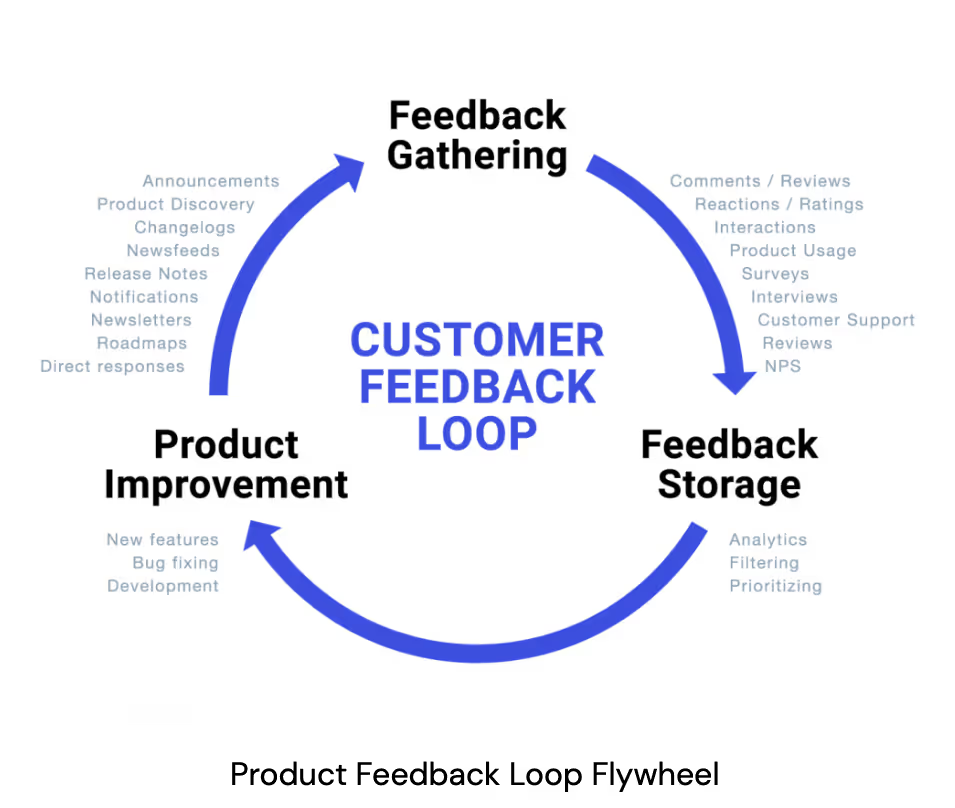
It’s a shift in mindset, one that shows how modern software evolves. The usage data informs about any bug fixes, feature updates, or even product retirement, for that matter. In case the lineage is unclear or engagement is low, there is a trigger to work for improvement, and not abandon the software as is.
When data is treated as a living product, organisations are armed with the agility to ensure trust, improve adoption, and enhance long-term value.
Observability and Contracts: Enablers of Trustworthy Data Usage
If data usage analytics are to drive meaningful decisions, then trust is a non-negotiable aspect. Data contracts and observability are two crucial pillars to ensure trust.
As far as data contracts are concerned, they set clear expectations between producers and consumers. They help in setting SLAs, specifying the schema, and guaranteeing a certain level of quality. Teams have reliable insights to back their statements on data usage, using parties, and usage frequency, among other insights.

💡 Related Reads:
Learn more about the value of data contracts here.
On the other hand, observability goes a step further by offering visibility into the performance and health of data products. Capabilities like data lineage show the origin point and flow of data, anomaly detection identifies any unusual patterns in quality or usage, and freshness tracking flags latency issues if any.
Together, these capabilities ensure that usage data can be relied upon as a feedback signal. As a result, teams can govern data proactively, make corrections or changes in real-time, and scale with conviction.
From Usage to ROI: Linking Product Success to Business Value
Today, when enterprises are becoming increasingly data-driven, measuring just the delivery won’t be enough to evaluate success. Business outcomes need to be included in this loop, and this is where usage analytics becomes a critical enabler.
With telemetry and observability embedded into data products, enterprises gain actionable insights into data usage along different parameters.
Each metric, such as user counts, query frequency, and time to first use, serves as an excellent indicator of value realisation, engagement, and the degree of product-market fit. With consistent tracking of usage patterns, teams are able to make smarter decisions.
Because ROI itself needs to be deeply entwined with organisational goals, the role of KPIs and metrics becomes all the more important.
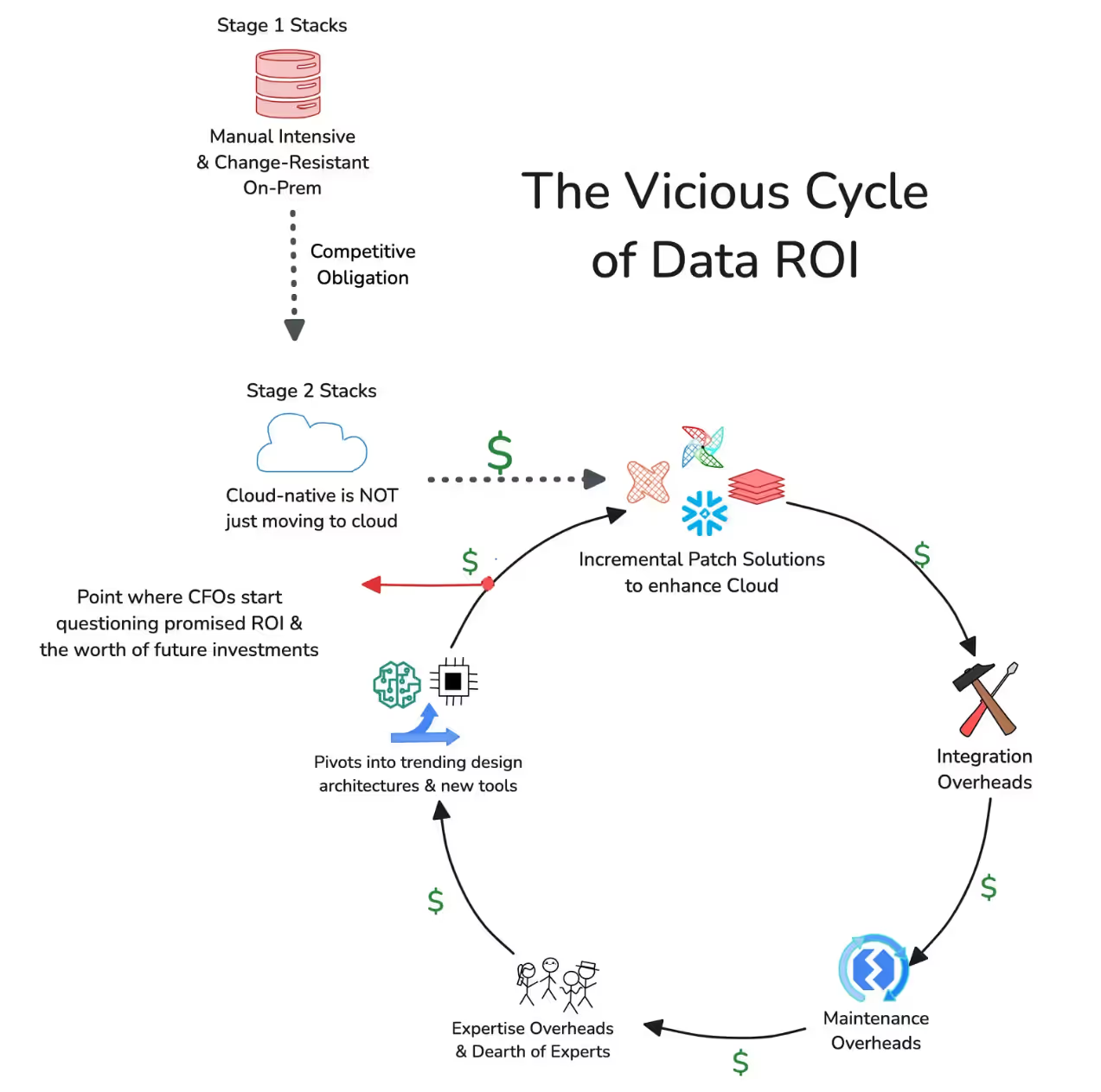
For understanding ROI of data products too, there is a need to move beyond BI pipelines and dashboards to a more value-driven arrangement, where strategic assessment becomes convenient as well.
Final Thoughts: Designing for Usage, Delivering for Outcome
The role and relevance of enterprise data is no longer confined to the generation of more dashboards, but in elevating its usability. Organisations succeeding with this today are well aware that data delivery is not the end goal, but driving the right kind of engagement, making the right impact, and ensuring proper trust is established.
This shift embodies today’s product thinking approach.
When data is treated as a product, it gets embedded into the design itself and is no longer thought of as being retrofitted, which limits its potential. It also empowers teams to move beyond simple delivery to usage-centric design, so that the right kind of data reaches the right users with proper context.
In a world where data is already saturated, data strategies need to revolve around what they can create for the users, and not on what they can make.
Frequently Asked Questions (FAQs)
Q1. How do usage metrics help in the improvement of data ROI?
Ans: Usage metrics such as SLA adherence, active users, and time to first use are helpful to understand what works and what doesn’t. Based on these observations, data teams can make informed decisions that ultimately boost returns on investment.
Q2. What is it that makes data usage analytics better than traditional BI pipelines?
Ans: In the case of data products, they are designed with usage in mind from the very first day. This is unlike conventional BI tools, as they don’t come with clear ownership, built-in telemetry, observability, and metadata to ensure better tracking of trust, adoption, and business value.
Q3. What is product thinking, and what is its importance in modern data strategy?
Ans: With product thinking, the focus shifts from delivery to outcomes. It ensures that data is built for users and also consists of feedback loops and contracts embedded into the design itself. The approach comes in handy as it drives trust, adoption, and long-term value across organisations.
Join the Global Community of 10K+ Data Product Leaders, Practitioners, and Customers!
Connect with a global community of data experts to share and learn about data products, data platforms, and all things modern data! Subscribe to moderndata101.com for a host of other resources on Data Product management and more!
.avif)
A few highlights from ModernData101.com
📒 A Customisable Copy of the Data Product Playbook ↗️
🎬 Tune in to the Weekly Newsletter from Industry Experts ↗️
♼ Quarterly State of Data Products ↗️
🗞️ A Dedicated Feed for All Things Data ↗️
📖 End-to-End Modules with Actionable Insights ↗️
*Managed by the team at Modern
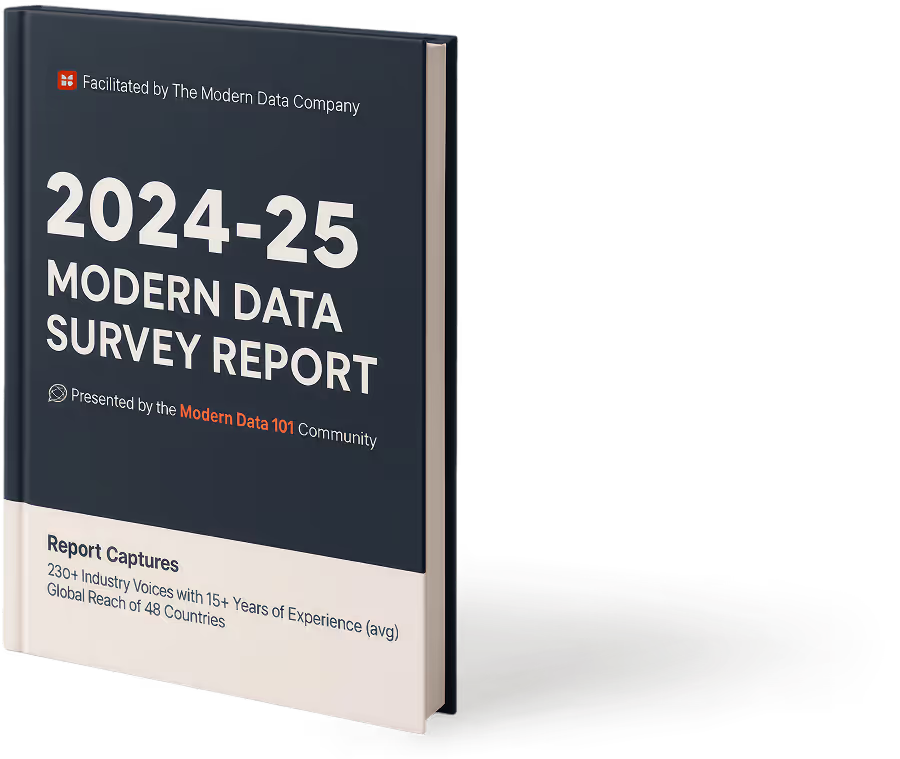
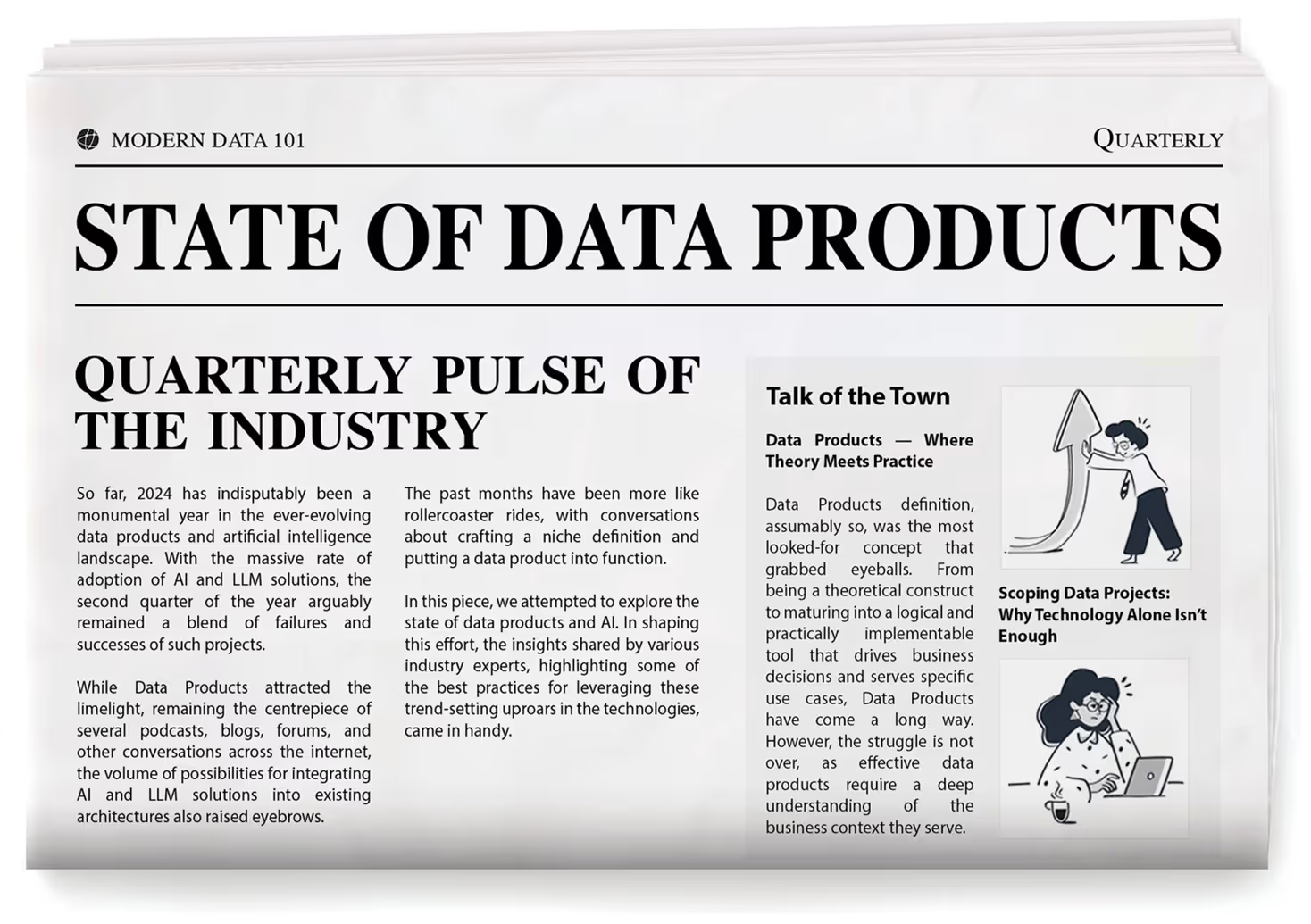

Author Connect 🖋️

Simran Singh Arora

Simran is a content marketing & SEO specialist.
Simran is a content marketing & SEO specialist.

More about
How Data Products Improve Data Usage Analytics in Modern Enterprises
Checkout our

Community resources
and

Related articles




